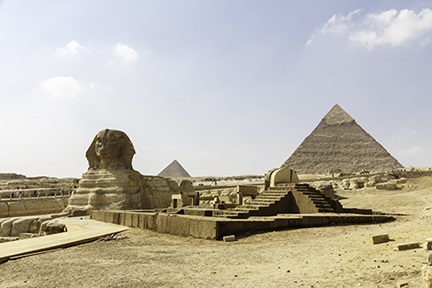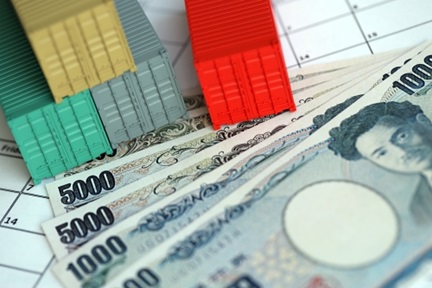Japanese investor doubles down on the African healthcare market
Susumu Tsubaki, CEO of the Singapore-based Japanese investment firm AAIC explains why he is betting on healthcare start-ups in Africa
By Jaco Maritz

Africa's healthcare system lags other regions, according to a 2022 World Health Organisation study.[1] While the continent is home to 14.4% of the world’s population, it accounts for only 1% of global health spending. The number of inpatient hospital beds per 10,000 people in Africa is estimated at just 10, compared to 45 in the East Asia and Pacific region.[2] Africa also has only 2.9 doctors per 10,000 people – partly due to medical ‘brain drain’ – in contrast to 7.7 in South-East Asia and 16.4 globally.[3] The WHO Universal Health Coverage (UHC) service coverage index, which measures access to essential health services without incurring financial hardship, scores Africa 46 out of 100, while South-East Asia stands at 61, and the global average is 67.

While many challenges remain, the continent has undoubtedly made progress in terms of healthcare over the past two decades, as evidenced by the fact that life expectancy at birth grew from 52.7 years in 2000, to 64.5 in 2019. Advancements have also been made in combating tuberculosis, HIV/AIDS, malaria and neglected tropical diseases, although these remain issues. The private sector is increasingly investing in healthcare facilities, including hospitals and diagnostic centres, serving not just the wealthy but also the middle class. Numerous healthtech start-ups have also emerged, offering innovative solutions such as telemedicine, patient booking systems, and more efficient and transparent medical supply chains.
Susumu Tsubaki, CEO of AAIC Investment, foresees Africa's healthcare sector expanding in response to increasing insurance coverage, directionally similar to the significant growth of Japan's medical industry after the introduction of universal health insurance in 1961.[4] AAIC (short for Asia Africa Investment & Consulting), manages two investment funds that back healthcare-related start-ups in Africa. Tsubaki believes that the growth of health insurance in the continent will be advantageous for AAIC's portfolio companies.
Health insurance coverage in Africa is among the lowest globally due to the cost and availability of policies. However, the industry is expanding. In several African countries, the value of premiums written by insurers (gross written premiums or GWP) is growing faster than GDP. For example, in 2020, Ghana's GWP increased by 13% while GDP growth was only 0.4%. Other countries such as Zambia, Zimbabwe, and Mozambique also saw double-digit premium growth rates despite declining GDP in the same year.[5] An earlier study by McKinsey & Company predicted that the continent's overall insurance market will see a compound annual growth rate of 7% between 2020 and 2025, second only to Latin America.[6]
There has been progress in expanding UHC in some countries. In Rwanda, the Community-Based Health Insurance programme helps low-income earners with access to medical care at affordable cost and covers a wide range of health services, including primary care and hospitalisation.[7] It is financed through a combination of government subsidies, employer and employee contributions, and donor funding.[8] The Ghana National Health Insurance Scheme, established in 2003, is regarded as one of the more successful such programmes in Africa and includes primary care, hospitalisation, and specialist care.[9] It is funded through a combination of a 2.5% levy on goods and services collected under value added tax, government subsidies and contributions from employers and employees.[10] However, in countries such as Kenya, health insurance is more limited with only around 20% of the population covered through a combination of private and public and private schemes, including the National Hospital Insurance Fund (NHIF).[11]
Innovative private sector insurtech and microinsurance solutions are increasingly making healthcare coverage more affordable and accessible to Africans through partnerships with mobile network operators and the use of mobile money or airtime as payment methods. For example, insurtech start-up Turaco offers medical and other policies in Nigeria, Kenya, and Uganda with an average premium of around $2 per month.[12] In Nigeria, WellaHealth covers common illnesses such as malaria and typhoid for monthly premiums of just over US$1.
Backing African healthcare start-ups
Japanese-born Tsubaki established AAIC in 2008, following a 15-year career as a partner and managing director at Boston Consulting Group and then as CEO of a listed company.
AAIC initially targeted investments in Asia but turned its attention to Africa in 2013 with a macadamia nut farming and processing operation in Rwanda. Four years later, in 2017, AAIC launched its first Africa Healthcare Fund (AHF1), which raised $47m. According to Tsubaki, AAIC’s focus on healthcare in Africa is due to high demand for medical services on the continent and the desire of Japanese healthcare companies to expand there. He was also inspired by former Prime Minister Shinzo Abe’s announcement at the sixth Tokyo International Conference on African Development (TICAD 6) conference in 2016 that Japan wanted to contribute to the region’s healthcare sector. At the most recent 2022 TICAD 8 conference, held in Tunis, Japan pledged US$30bn in public and private investment over the next three years in a variety of areas, including health.[13] According to Tsubaki, the increasing prevalence of smartphones and internet connectivity is making digital healthcare solutions more feasible for addressing a variety of illnesses in Africa.
In 2022, AAIC introduced its second fund, the Africa Innovation & Healthcare Fund (AHF2), which aims to raise US$150m for investment in the digital healthcare sector, including areas such as teleconsulting and artificial intelligence in medical diagnosis. The fund has recently closed a US$16m Series B funding in an Egyptian online pharma platform called Yodawy. It connects patients, health insurance firms and pharmacies. Patients can have their medications delivered directly to their homes, while the platform's integration with health insurance providers allows them to use their insurance cards online when making purchases. In Egypt, the majority of prescriptions and insurance claims are still recorded on paper, leading to issues such as prescription errors, slow processing times, and long lines at pharmacies and hospitals. Yodawy addresses these problems by digitising the entire process from prescription generation to medication delivery.
Most of the investors, or limited partners, in AAIC’s two funds are large Japanese companies, including Eisai (pharmaceuticals), Ohara (pharmaceuticals), Asahi Intec (surgical and medical instrument manufacturing), and Marubeni Corporation (general trading), to name a few. These companies see their investments as a way to take advantage of Africa’s rapidly growing healthcare industry and potentially sell their products on the continent.
AAIC Investment strategy
AAIC, which has invested in over 30 companies, has concentrated its first fund’s investments in Africa’s top start-up hubs: Kenya, Nigeria, South Africa, and Egypt. It currently has offices in these countries and will continue to target them for its new AHF2 fund but is also considering opportunities in neighbouring markets.
Tsubaki says AAIC’s exit strategy varies, depending on the industry. “In the hospital sector, we plan to sell to groups of companies that specialise in this area. In the tech sector, our goal is to either go public in the US or be acquired by other companies in the industry. For investments in the services sector, we plan to sell to Japanese companies, including our investors, that have a strong interest in this field.”
Africa Healthcare Network: A dialysis chain
One of AAIC’s investments is Africa Healthcare Network, a chain of dialysis centres to treat people with kidney disease. After discovering a significant shortage of such facilities, founder Nikhil Pereira-Kamath started the business in 2015 with a single clinic in Rwanda. When AAIC invested, the business had three centres; currently it has over 28 facilities in Rwanda, Tanzania, and Kenya.
The company charges a fee for each dialysis treatment. Patients with kidney failure typically need to undergo dialysis three times per week, often for the rest of their lives unless they receive a kidney transplant. In addition to dialysis, it also generates revenue through the sale of medications and other related medical procedures.
Helium Health: Technology solutions for healthcare providers
In 2020, AAIC co-led a $10m fundraising round for Helium Health, a Nigeria-based company that began in 2016 by offering a digital system for hospitals to replace paper-based patient records. Since then, the business has expanded to other African countries and added a range of services, including a telemedicine platform for remote consultations, a medical billing and practice management system, and a patient portal for accessing medical records and communicating with healthcare providers online. In 2021, Helium Health also acquired Meddy, a doctor booking platform with operations in the UAE and Qatar.[14]
Revital Healthcare: Medical supplies
Revital Healthcare is a medical supplies manufacturer located in a special export zone near Mombasa on the Kenyan coast. One of its flagship products are auto-disable syringes, which are designed to only be used once, thereby minimising the transmission of pathogens such as hepatitis B and HIV from one patient to another. Covid-19 vaccinations have led to a growing demand for these syringes, and demand is anticipated to remain robust due to the roll-out of new malaria vaccines and continuing childhood immunisation. The company is the only auto-disable syringe manufacturer in sub-Saharan Africa prequalified by the World Health Organisation.
The investment from AAIC, announced in December 2021, will be used to enhance Revital's production capacity and expand into rapid diagnostics test kits for diseases such as Covid-19, malaria, and HIV, as well as laboratory consumables.
Looking beyond healthcare
In addition to investing in pure-play healthcare companies, AAIC has also backed fintech and logistics businesses, including cross-border payments platform Chipper Cash and Kenyan logistics company Sendy. Tsubaki explains that the rationale behind these investments is that they support the healthcare industry. "Logistics of pharmaceuticals is a major challenge in Africa. Also, about 20% of international remittance needs are healthcare related, such as when someone is sick and needs money for treatment."
Africa Healthcare Network has targeted countries with adequate public or private health insurance coverage or a large enough cash patient population. According to Pereira-Kamath patients receiving dialysis (in Africa) is expected to increase nearly 25% year on year.
A rapidly growing VC industry
Tsubaki says venture capital (VC) in Africa has evolved significantly since he first started investing. According to industry association AVCA, the number of VC transactions recorded on the continent expanded at a compound annual rate of 32% between 2014 and 2021.[15] In the first half of 2022, the cumulative value of VC deals in Africa reached US$3.5bn , an increase of 133% from the same period in 2021.[16]
Investing in Africa presents similar challenges to operating in other emerging markets such as India, China or Southeast Asia, according to Tsubaki. He explains that, like in Asia, many African start-up founders have a Western education and approach to business, bringing a developed-world perspective as they establish and grow their companies on the continent.
Japanese investors are bullish on Africa
According to a Japan External Trade Organisation survey, about 60% of Japanese companies with a presence in Africa believe the importance of the continent will increase over the next five years.[17] The survey respondents cited expanding populations and markets, the nascent African Continental Free Trade Area (AfCFTA), and the "leapfrog phenomenon" as reasons for this expected increase in business opportunities. The "leapfrog phenomenon" refers to the adoption of newer technologies in Africa without going through intermediate stages that were necessary in other parts of the world. Kenya (38%), South Africa (33%), and Nigeria (31%) were identified as the top three African countries of interest, followed by Ghana (22%) and Ethiopia (21%).
Of the companies surveyed, 65% pointed out "development and implementation of regulation or legislation" as a risk for investing in Africa, followed by "political or social instability" (56%) and "financial affairs, financing or foreign exchange" (47%).
“Japan has many excellent technologies. However, most of them are for the domestic market, with little focus on overseas markets, especially Africa. I would like to contribute by bringing these technologies to Africa,” Tsubaki says. Due to the declining birth rate and aging population in Japan, Tsubaki's hypothesis is that Japanese firms must expand their businesses overseas and cooperate with emerging markets such as Africa to achieve future growth.
Conclusion
The African healthcare sector presents numerous opportunities for Asian businesses and entrepreneurs, through partnerships with local companies or by establishing their own ventures. The private sector can fill the gaps where government funding is lacking. There is a large market in Africa for affordable clinics and private hospitals among the middle and lower classes. Asian healthcare equipment and medical products manufacturers can export their products to Africa, and there is import substitution potential by producing locally on the continent. Furthermore, technology provides a chance to make healthcare more efficient and affordable for the masses. There are also prospects in industries supporting the healthcare sector, such as AAIC's investments in logistics and payment solutions.
References
[1] 'Atlas of African Health Statistics 2022', World Health Organisation, 2022
[2] 'Hospital beds (per 1,000 people) - East Asia & Pacific', World Health Organisation, Accessed 31 January 2023
[3] 'World Health Statistics 2022', World Health Organisation, 19 May 2022
[4] ‘The transition and characteristics of Japan’s healthcare system’, International University of Japan, 2020
[5] ‘The rapid evolution of insurance in Africa’, Standard Bank, 24 March 2022
[6] ‘Africa’s insurance market is set for takeoff’, McKinsey & Company, 16 December 2020
[7] ‘CBHI Scheme’, Rwanda Social Security Board, Accessed 29 December 2022
[8] ‘Rwanda establishes subsidy contributions from employees for Community-Based Health Insurance Scheme’, EY, 06 March 2022
[9] ‘National Health Insurance Scheme (Ghana)’, Wikipedia, Accessed 29 December 2022
[10] ‘Brief introduction to the NHIS’, NHIS, Accessed 29 December 2022
[11] ‘Kenya Health Financing System Assessment 2018,’ Health Policy Plus, 2018
[12] ‘Insurance for $2 a month: The business model of African start-up Turaco’, How we made it in Africa, 10 October 2022
[13] ‘Through TICAD8, Japan deepens its partnerships in Africa’, Japan International Cooperation Agency, 05 October 2022
[14] ‘Nigeria’s Helium Health acquires Qatar’s Meddy in rare Africa-GCC deal’, TechCrunch, 11 November 2021
[15] ‘Venture Capital in Africa Report’, AVCA, April 2022
[16] ‘2022 H1 African Venture Capital Activity Report’, AVCA, September 2022
[17] ‘Survey on Business Conditions of Japanese Companies in Africa’, Japan External Trade Organisation, 14 February 2022


.tmb-listing.jpg?Culture=en&sfvrsn=8636ce67_1)





